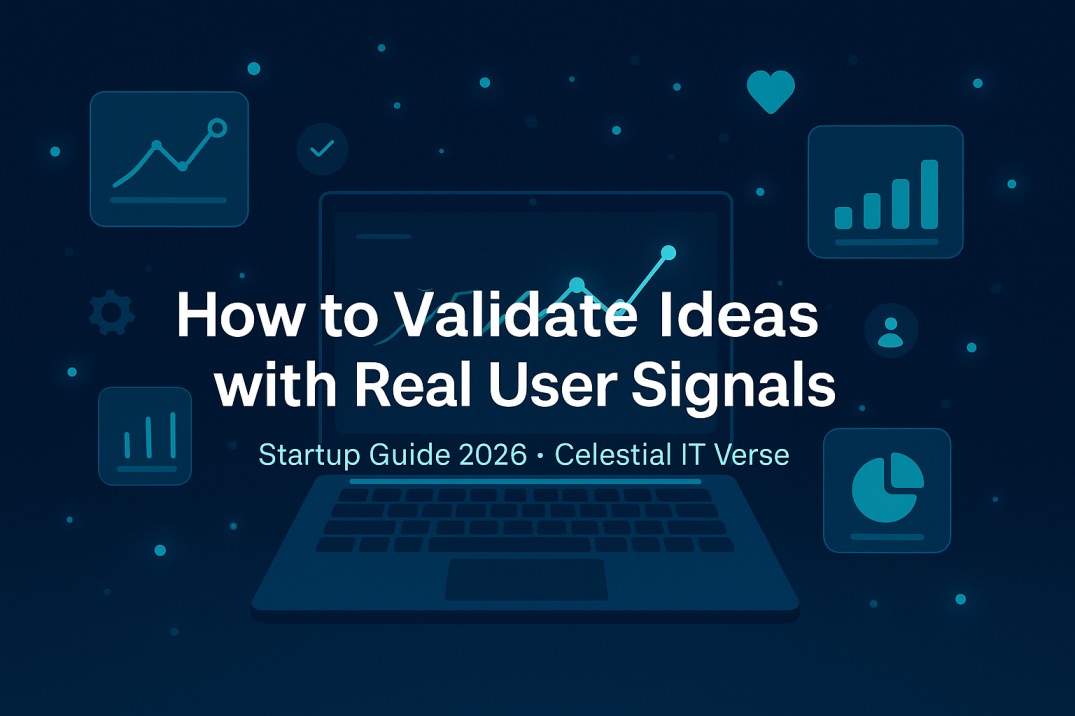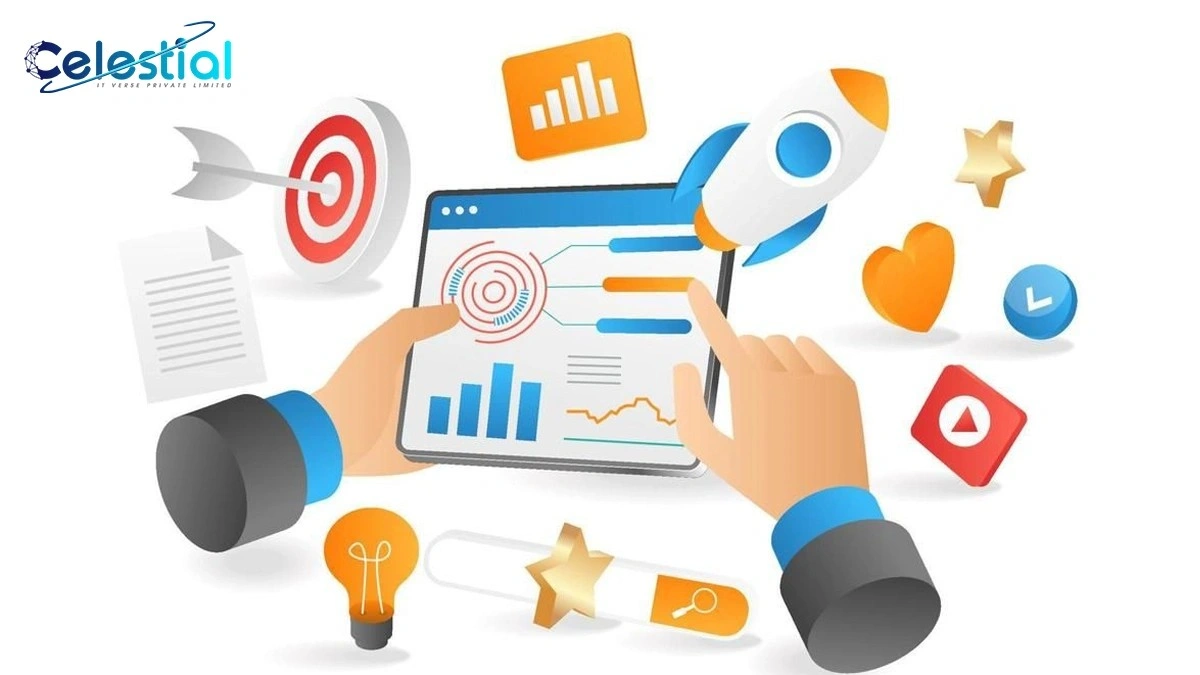Introduction — Why & How to Validate Ideas with Real User Signals Is the First Step to Startup Success
Most startups fail not because their ideas are bad, but because they never validated them with real user signals.
In 2026, markets evolve faster than ever — users are flooded with apps, SaaS tools, and products. If you don’t validate early, you risk building something nobody truly wants.

Validating ideas with real user signals means collecting proof from real-world user actions — not just opinions. It’s the difference between “people say they like it” and “people actually use or pay for it.”
“Validation isn’t about proving your idea is right; it’s about discovering where you might be wrong — before it gets expensive.”
— Rajendra Gupta, Founder & CEO, Celestial IT Verse Pvt. Ltd.
Traditional Validation vs. Real User Signal Validation
Before understanding how to validate your idea with real users, let’s clarify what not to do.
| Traditional Validation | Real User Signal Validation |
|---|---|
| Asking friends or family for feedback | Talking to actual users facing the problem |
| Surveys & assumptions | Data-backed user behavior |
| Building the full MVP first | Testing small before scaling |
| Counting likes/comments | Tracking conversions, retention, or payments |
Traditional validation is guesswork.
Real signal validation is evidence — measurable, actionable, and scalable.
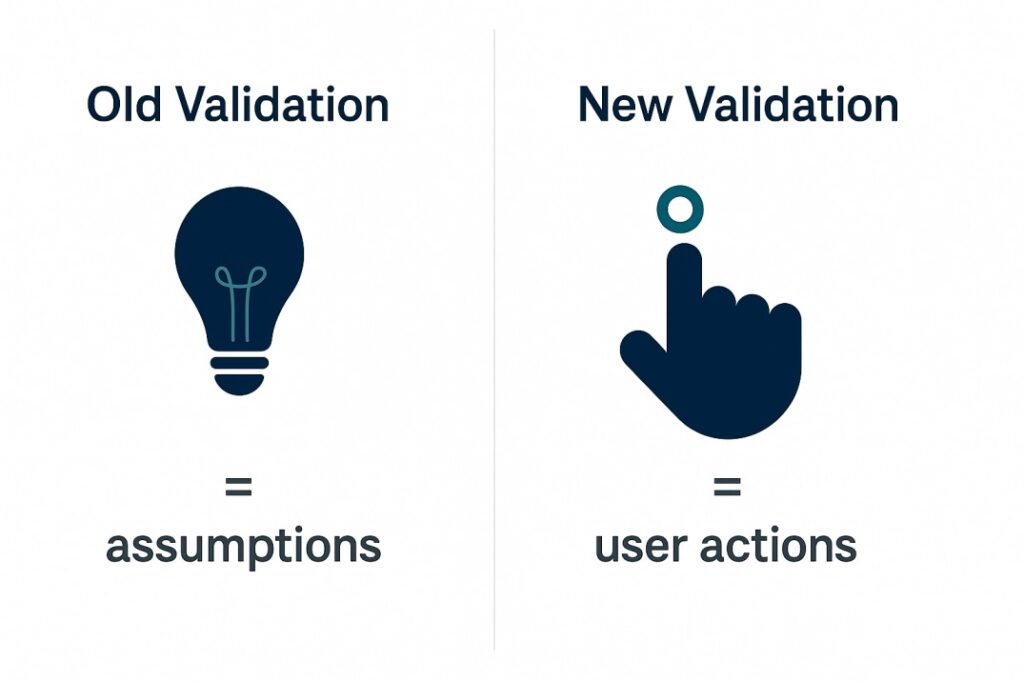
Step 1: Problem Discovery Interviews — Listen Before You Build
The first step in validating an idea with real user signals is understanding the pain behind the problem.
What to Do
- Identify people who live with the problem, not random users.
- Ask:
- “What’s the hardest part about doing ___?”
- “How do you currently handle this?”
- “If this solution vanished tomorrow, what would change for you?”
- Don’t sell. Just listen.
Real Example
Before launching AAL CRM, Celestial IT Verse interviewed 30+ laundry owners in UP and Bihar.
Most didn’t want marketing tools — they wanted simple billing and customer credit tracking.
That insight redefined the MVP.

Step 2: Landing Pages & Waitlists — Collect Action, Not Opinions
If users are interested, they’ll click, sign up, or wait in line.
How to Apply
- Create a one-page landing site using Framer or Typedream.
- Include:
- The problem
- Your promise (the solution)
- CTA like “Join Waitlist” or “Get Early Access”
- Run a small test ad (₹1,000–₹2,000) targeting your potential audience.
Key Metric
- 10%+ signup rate: Strong demand
- <3%: Message mismatch or weak value
Example: Drivergill got 186 signups in 3 days with just a waitlist page — no app yet.
That’s validation you can’t ignore.
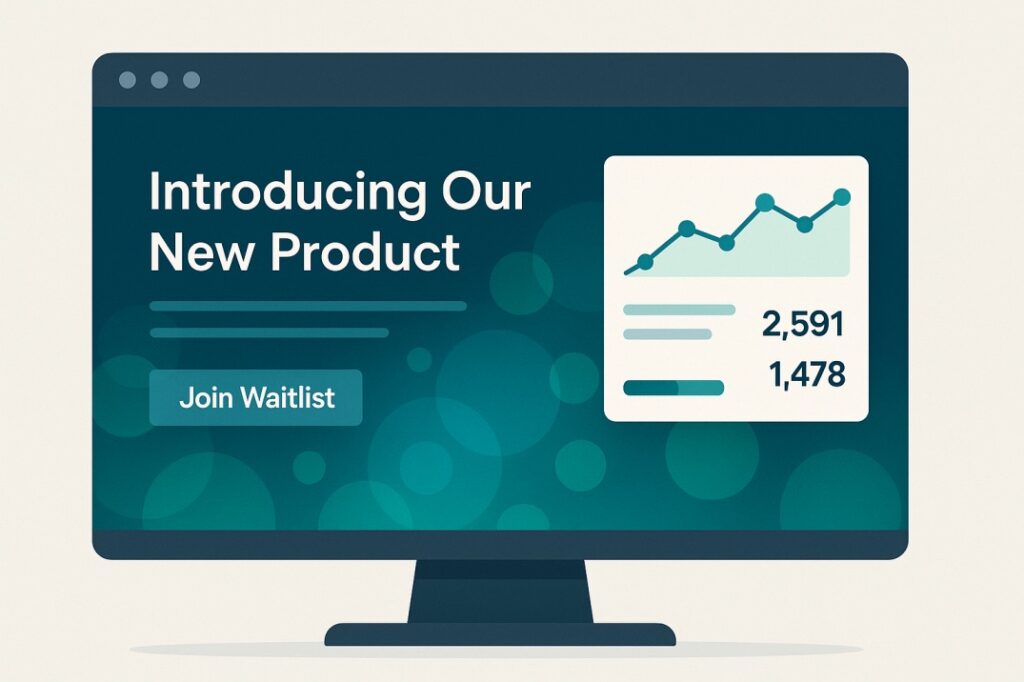
Step 3: MVP Testing — Build to Measure, Not Impress
A Minimum Viable Product (MVP) should exist only to test your assumptions.
How to Validate
- Focus on 1–2 core actions users must take.
- Build fast with no-code tools like Bubble or Glide.
- Track:
- How many sign up
- How many return
- Which feature they repeat most
AAG (Aapka Apna Game) validated early traction when users played multiple 1v1 matches without rewards. That repeat usage proved engagement before monetization.
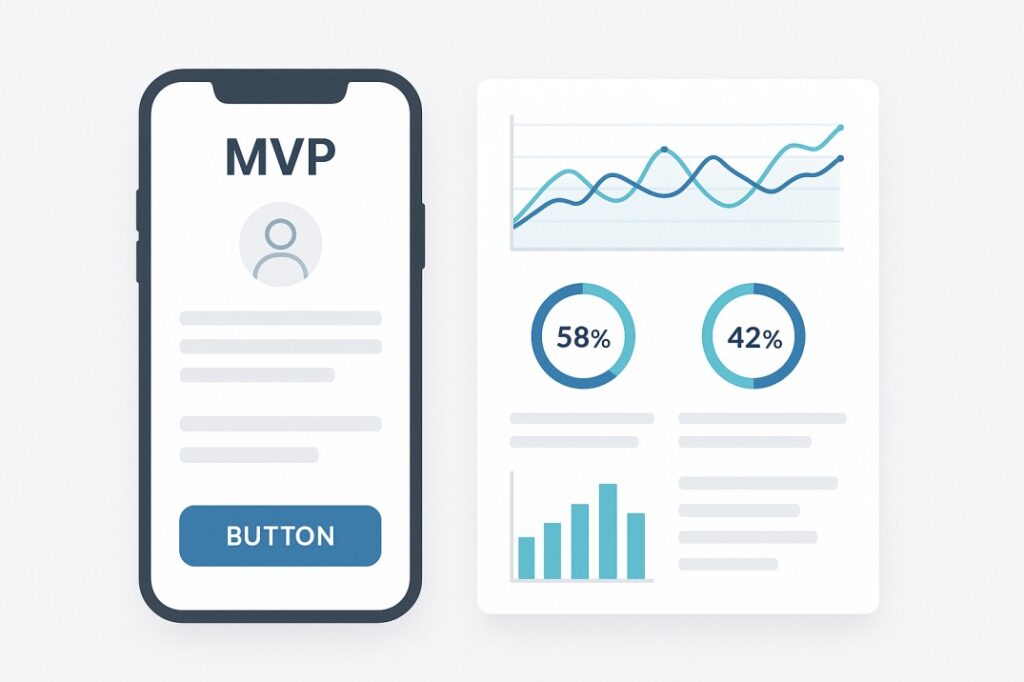
Step 4: Pre-Sales & Crowdfunding — When People Pay, It’s Real
The strongest real user signal is money.
What You Can Do
- Offer early access or “founding member” pricing.
- Accept pre-orders before launch.
- Track conversions — not likes.
Example: One SaaS founder raised ₹2.5 lakh in pre-sales before building his tool.
If people pay early, your idea is already validated.
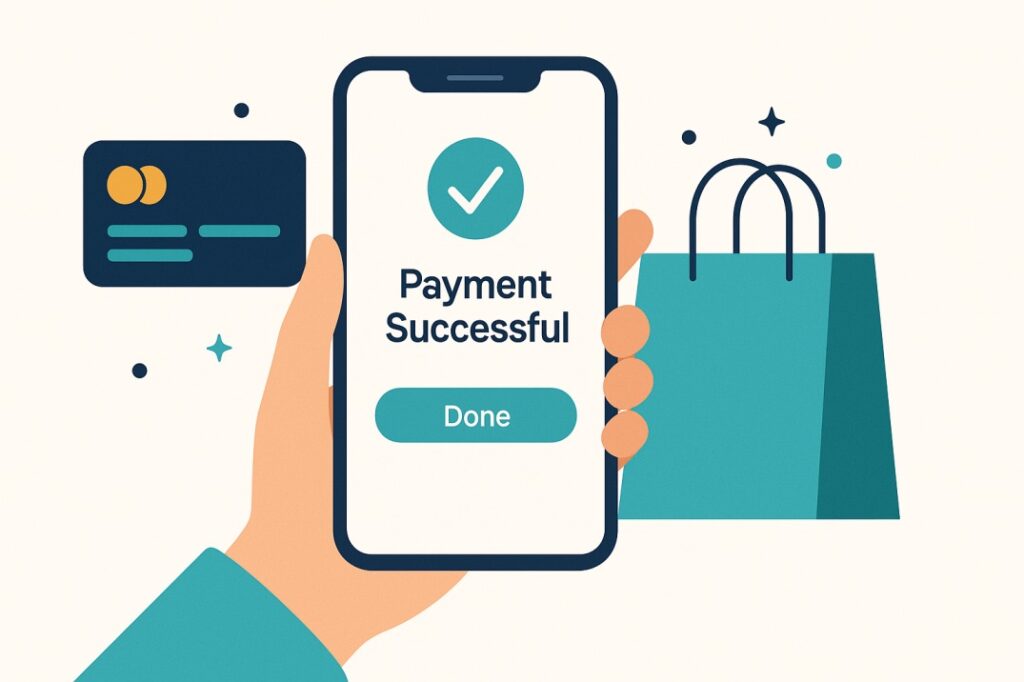
Step 5: Retention & Behavior Tracking — The Final Signal
After the first launch, focus on who returns — not just who installs.
Metrics to Track
- Repeat sessions per user
- Feature usage frequency
- Time to churn (uninstall or inactive days)
- Support chats — recurring questions indicate confusion or gaps
A retained user is the strongest validation.
Retention proves that your product doesn’t just attract — it delivers value.
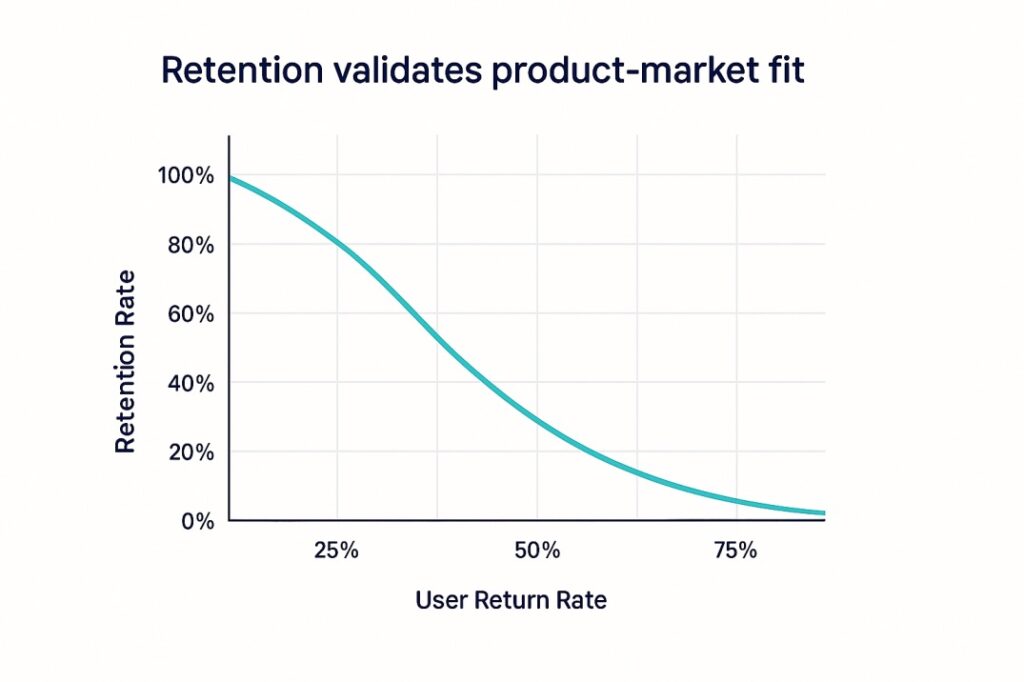
Common Gaps Founders Miss While Validating Ideas
| Gap | Reality Check | Why It Matters |
|---|---|---|
| Emotional Drivers | Users say “nice idea” but don’t care enough. | Emotions create urgency to act. |
| Segment Fit | Tested only one audience type. | Different segments react differently. |
| Competitive Context | Ignored alternatives. | Users already solve their problem another way. |
| Price Testing | Only free users tested. | Behavior changes once money enters. |
| Problem Depth | Focused on feature, not pain. | Validation must start from the real problem. |
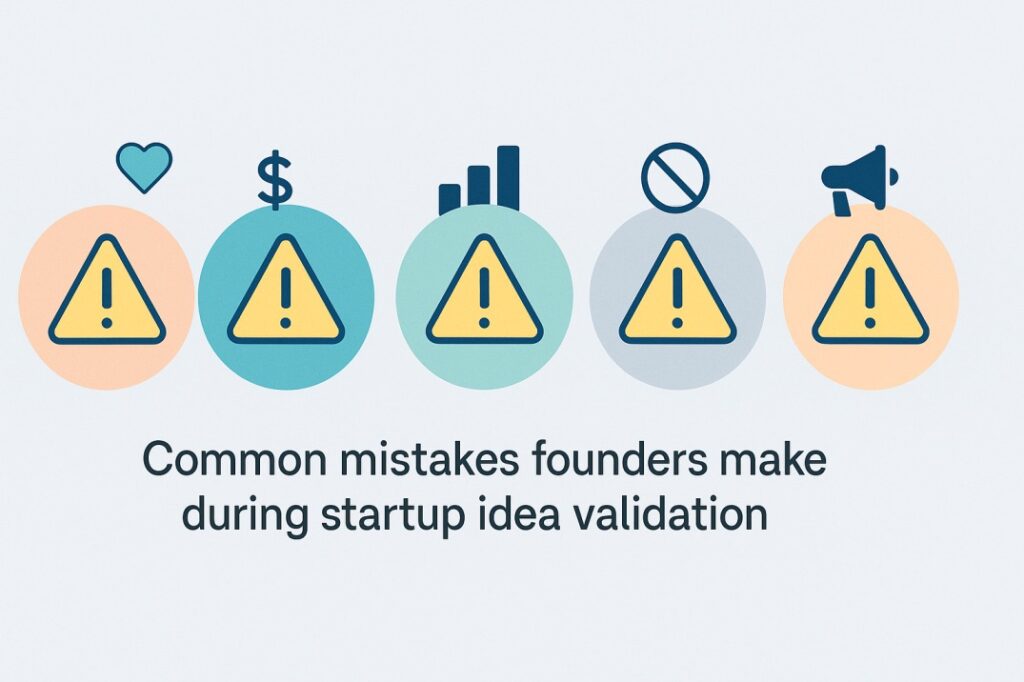
Comparison Table: Idea Validation Approaches
| Method | Cost | Time | Signal Type | Ideal Stage | Strength |
|---|---|---|---|---|---|
| User Interviews | ₹0 | 1–2 weeks | Qualitative | Early | Deep problem clarity |
| Landing Page | ₹1K–₹2K | 3–5 days | Quantitative | Pre-MVP | Market interest |
| MVP Testing | ₹5K–₹15K | 2–4 weeks | Mixed | MVP | Usability proof |
| Pre-Sales | Variable | 1–3 weeks | Monetary | Pre-launch | Demand confirmation |
| Retention Tracking | Low | Continuous | Behavioral | Post-MVP | Long-term fit |
Key Takeaways: How to Validate Ideas with Real User Signals
- Action beats opinion — focus on what users do, not what they say.
- Emotion drives action — validate pain, not compliments.
- Build clarity before code — validate your message first.
- Track retention — users returning = real traction.
- Money never lies — pre-sales prove real demand.
FAQs About How to Validate Ideas with Real User Signals
1. What are real user signals in startup validation?
Real user signals are measurable actions — signups, purchases, repeated usage, or pre-orders — that prove users are genuinely interested in your product or solution.
2. Why is validating ideas important before building?
It helps founders avoid wasting months or lakhs building features that no one needs. Real user validation ensures your effort solves a verified problem.
3. What’s the difference between market research and idea validation?
Market research tells you what people say. Validation tells you what people do — and action always matters more than opinion.
4. Can small founders or bootstrapped startups validate ideas cheaply?
Absolutely. You can validate with ₹1000–₹2000 using landing pages, small ads, and no-code prototypes before investing in full development.
5. What’s the best validation metric?
The best metric depends on your stage:
- Early stage: Conversions or signups
- MVP stage: Retention and repeat use
- Pre-launch: Pre-orders or payments
Final Thoughts
Validating ideas with real user signals isn’t optional anymore — it’s survival.
Don’t guess. Don’t assume. Don’t rush.
The market already speaks — your job is to listen through data, emotion, and repeat behavior.
Because in 2026, founders who validate early don’t just build faster — they build right.
🔗 Read More: Startup Guide 2026 – Complete Playbook Series

